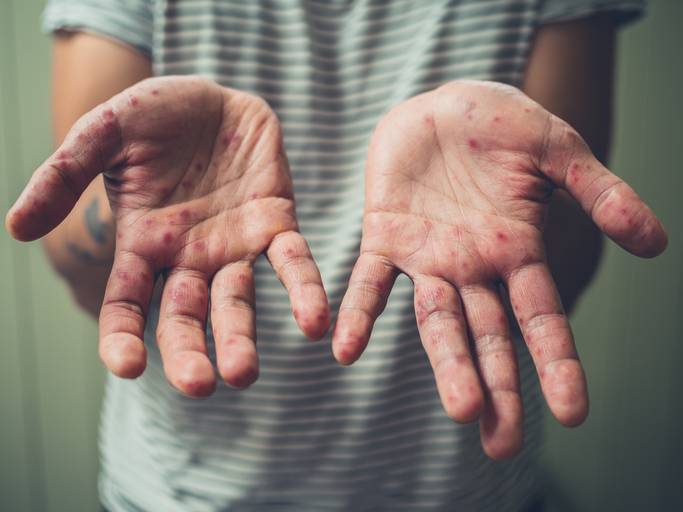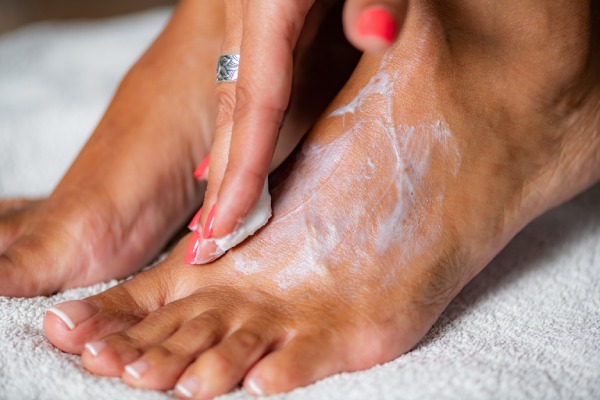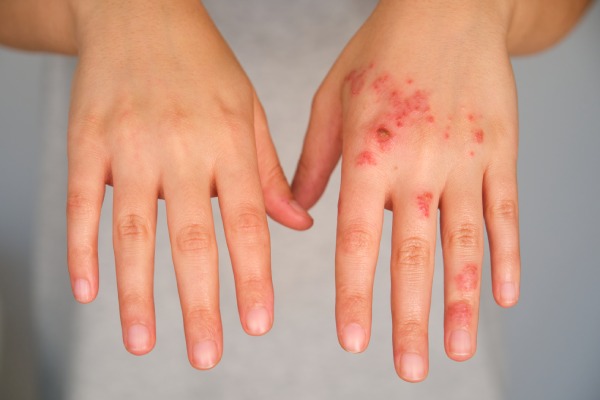Hand, Foot, and Mouth Disease (HFMD) is often associated with young children, but adults are not immune to this viral infection.
Imagine waking up with a mild fever and a sore throat, thinking it’s just a common cold, only to find painful sores and an itchy rash developing on your hands, feet, and even inside your mouth. HFMD in adults is an illness that can be surprisingly severe and disruptive.
In this article, we’ll explore the intricacies of Hand Foot and Mouth Disease in adults, including its symptoms, stages, transmission, and prevention, providing you with a comprehensive understanding of this often misunderstood disease.
What is Hand Foot and Mouth Disease (HFMD) in Adults?
The National Collaborating Centre for Infectious Diseases explains that hand, Foot, and Mouth Disease (HFMD) is a highly contagious viral infection caused primarily by enteroviruses.
According to the Middlesex-London Health Unit, HFMD is most common in children under the age of 10 but can also affect adults, albeit less frequently. The infection is characterized by a fever, sores in the mouth, and a distinctive rash on the hands and feet.
Although typically mild, HFMD can be more severe in adults, leading to significant discomfort and potential complications.
HFMD Risk Factors – Who is at Risk?
Adults who are frequently in close contact with children, such as parents, teachers, and childcare workers, are at higher risk of contracting HFMD. The disease spreads easily in environments where hygiene practices may be compromised, such as daycares and schools.
Additionally, individuals with weakened immune systems are more susceptible to severe symptoms. It is important for at-risk adults to be vigilant and practice good hygiene to minimize the risk of infection.
Is HFMD More Dangerous in Adults?
While HFMD is generally mild in children, adults tend to experience more severe symptoms. An adult’s immune system may react more vigorously to the virus, leading to more pronounced and painful symptoms.
Complications, although rare, can include dehydration, viral meningitis, and encephalitis, with the elderly population, pregnant women, and individuals with preexisting conditions being more at risk, as explained by the Cleveland Clinic.
Therefore, understanding the symptoms and stages of Hand Foot and Mouth Disease in adults is crucial for timely diagnosis and management.

Hand Foot and Mouth Disease Symptoms in Adults
The symptoms of Hand Foot and Mouth Disease in adults can be quite varied and are often more severe than those seen in children. Early recognition of these symptoms can help manage the disease more effectively.
Here are the most telling signs of HFMD in adults:
- Fever: One of the first signs is a mild to moderate fever. This fever often precedes other symptoms and may be accompanied by general malaise. Adults might dismiss this initial symptom as a common cold or flu, but it is important to monitor for additional signs that could indicate HFMD.
- Sore Throat: A sore throat is another early symptom of Hand Foot and Mouth Disease in adults. This can be particularly uncomfortable, leading to difficulty swallowing and speaking. The soreness is often accompanied by small, painful sores or ulcers in the mouth and throat, which can exacerbate the discomfort.
- Itchy Rash (Usually on Hands or Feet): The hallmark of HFMD is an itchy, red rash that typically appears on the hands and feet. This rash may start as flat red spots and develop into blisters.
- Feeling Sick and Tired: General feelings of being unwell and fatigued are common in adults with HFMD. This sense of malaise can be severe, making it difficult to carry out daily activities. Rest is crucial during this phase to help the body fight off the infection.
- Loss of Appetite: Due to the painful sores in the mouth and throat, adults with HFMD often experience a loss of appetite. Eating and drinking can be uncomfortable, leading to decreased nutritional intake.
The Two Stages of Hand Foot and Mouth Disease in Adults
HFMD in adults progresses through two primary stages, each characterized by distinct symptoms.
Stage 1: Flu-like Symptoms
The initial stage of HFMD presents with flu-like symptoms, including a mild fever, sore throat, and runny nose.
These symptoms may last for a few days and can be easily mistaken for a common cold or flu. During this period, adults may also experience headaches, muscle aches, and general discomfort.
Stage 2: Itchy Rash and Painful Sores
A few days after the onset of the initial symptoms, the second stage begins. This stage is marked by the appearance of an itchy rash and painful sores on the hands, feet, elbows, knees, and sometimes the genitals or buttocks.
The rash often starts as flat red spots and can develop into fluid-filled blisters that may burst and form scabs. The mouth sores can be particularly painful, making eating and drinking challenging.
Hand Foot and Mouth Disease Causes
HFMD is primarily caused by enteroviruses, a group of viruses that thrive in the human digestive tract. The main culprits include:
- Coxsackievirus A16
- Coxsackievirus A6
- Enterovirus 71
These viruses belong to the enterovirus family and are highly contagious, spreading easily from person to person. The viruses can survive on surfaces for several hours, making it easy for them to be transferred from contaminated objects to individuals.
How Can Hand Foot and Mouth Disease be Transmitted?
The viruses causing HFMD can be transmitted through several routes, making it easy for the disease to spread, particularly in crowded settings. Some of the most common culprits of transmitting this disease include:
- Sneezing or Coughing: The viruses responsible for HFMD can be spread through respiratory droplets. When an infected person sneezes or coughs, the droplets can be inhaled by others, leading to transmission.
- Saliva or Stool: HFMD can also be transmitted through contact with an infected person’s saliva or stool. This can happen during activities such as changing diapers or sharing eating utensils.
- Close Contact (Kissing, Hugging): Close personal contact, such as kissing or hugging, can facilitate the spread of the virus. It is important to limit such contact with infected individuals to prevent transmission.
- Touching Contaminated Surfaces or Objects: The viruses can survive on surfaces and objects for several hours. Touching a contaminated surface, such as doorknobs, toys, or countertops, and then touching the mouth, nose, or eyes can lead to infection.
- Fluid from Blisters: The fluid from the blisters caused by HFMD is highly infectious. Contact with this fluid can result in the spread of the virus to others.
How is Hand Foot and Mouth Disease Diagnosed?
Diagnosing HFMD involves a combination of physical examination and laboratory tests.
- Physical Examination of the Rashes or Sores: A healthcare provider will examine the characteristic rashes and sores on the hands, feet, and mouth to identify HFMD. These physical signs are often enough to make a preliminary diagnosis.
- Asking About the Symptoms: A detailed patient history is crucial for diagnosis. The healthcare provider will ask about recent symptoms, their onset, and any potential exposure to infected individuals.
- Throat Swab or Stool Sample: To confirm the diagnosis, a throat swab or stool sample may be taken to detect the presence of the HFMD-causing viruses. Laboratory analysis of these samples can provide definitive evidence of the infection.

Hand, Foot, and Mouth Disease Treatment Options
There is no specific treatment for Hand Food and Mouth Disease, but several measures can help alleviate symptoms and speed up recovery.
HFMD usually resolves on its own within 7-10 days without medical intervention, placing the focus on managing symptoms and ensuring the patient’s comfort.
Here are some of the most common strategies suggested for those diagnosed:
- OTC Pain Relievers for Fever and Pain: Over-the-counter pain relievers such as acetaminophen and ibuprofen can help reduce fever and alleviate pain. It is important to follow dosage instructions and consult a healthcare provider if necessary. At your nearest PharmaChoice pharmacy, look for the Option+ logo on our Health For Your Everyday products to find affordable, high-quality solutions.
- Anti-itch Lotion, such as Calamine: Calamine lotion can be applied to the itchy rash to provide relief. A healthcare provider may also recommend other anti-itch treatments.
- Gargling with Salt Water for Sore Throat: Gargling with warm salt water can help soothe a sore throat and reduce discomfort and inflammation. This simple remedy can be done several times a day to provide relief.
- Drinking Cold Fluids (Hot Beverages Can Worsen Mouth Sores): Staying hydrated is essential, and cold fluids can soothe mouth sores. Avoid hot beverages, as they can irritate the sores further. Ice chips and popsicles are also good options for staying hydrated while soothing the mouth.
- Avoid Spicy or Acidic Food: Spicy and acidic foods can exacerbate mouth sores, leading to increased pain and discomfort. Soft, bland foods are best during this period. Foods like yogurt, applesauce, and mashed potatoes are easier to eat and less likely to irritate the mouth.
Hand, Foot, and Mouth Disease Prevention Strategies
Preventing the spread of HFMD requires good hygiene and careful practices, especially in environments with children.
- Wash Hands Frequently and Thoroughly with Soap and Water: Regular hand washing is the most effective way to prevent the spread of HFMD. This is especially important after using the restroom and before eating.
- Disinfect Surfaces and Objects: Regularly disinfecting commonly touched surfaces and objects can help reduce the spread of the virus. Use disinfectant wipes or solutions to clean countertops, doorknobs, and other frequently touched items.
- Avoid Sharing Eating Utensils, Cups, Clothing, Towels, etc.: HFMD can spread through saliva and other bodily fluids, so avoid sharing eating utensils, cups, and personal items with infected individuals.
- Cough or Sneeze Into Your Elbow: This practice helps prevent the spread of respiratory droplets that may contain the virus. Teach children to cover their mouths and noses with their elbows when coughing or sneezing.
- Avoid Close Contact with Infected People or Children: Limiting close contact with individuals who have HFMD can help prevent the spread of the disease. This includes avoiding kissing, hugging, and other forms of direct contact.
When to Consult a Doctor?
While most adults with HFMD recover without medical intervention, there are certain situations where consulting a doctor is necessary.
In most cases, HFMD in adults is mild and self-limiting. However, it is important to monitor symptoms and seek medical advice if necessary.
If symptoms persist beyond 10 days or become severe, it is important to seek medical advice. This includes experiencing difficulty swallowing, severe pain, or symptoms of complications.
Pregnant women who contract HFMD should consult their healthcare provider regardless. While complications are rare, it is important to monitor for any potential issues that could affect the pregnancy.

Learn More About Hand Foot and Mouth Disease at Your Local PharmaChoice Pharmacy
Hand, Foot, and Mouth Disease, though often associated with children, can pose significant challenges for adults as well. Recognizing the symptoms early and understanding the stages of the disease are essential steps in managing this viral infection effectively.
If you suspect that you or someone in your family may have contracted HFMD, don’t hesitate to reach out for professional advice. Managing the symptoms of HFMD effectively requires a comprehensive approach, and your local PharmaChoice pharmacist is an excellent resource for guidance and support.
Our pharmacists can provide you with tailored advice on over-the-counter treatments, preventative strategies, and overall health management to ensure a swift and smooth recovery.



